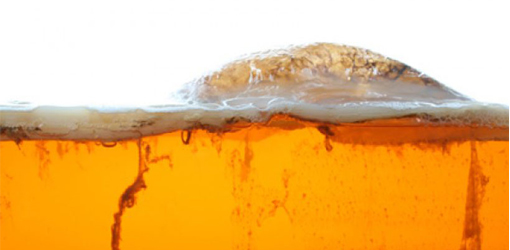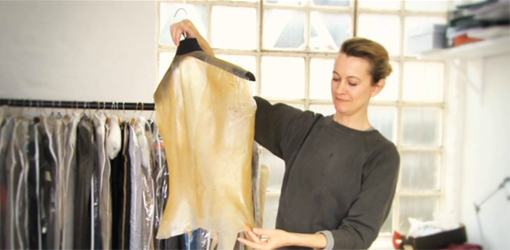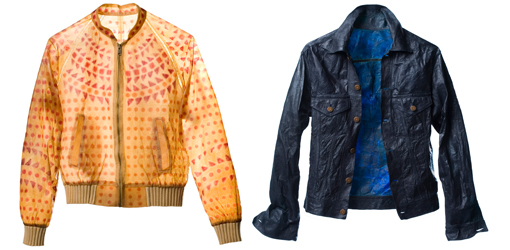Bio-Solution
Posted on December 22, 2011 | posted by:In the story of God creation, God created Adam and Eve, with soil and a piece of bone from Adam; humans as creation of God, which live for 8-9 decades, self-regenerate, self-recover and degradable (except the bones) into soil, which has been a good example of an ecological and sustainable cycle of human body.
However, our industrial society extracts raw materials from the earth and damages the biosphere. Such as, Amazon deforestation and damaging the marine- ecosystem by over consuming trees and fishes. Also the industrial wastes and used of toxic and hazardous chemicals in production process, end up as pollution, acid rain, and green house gases. Most of the designers haven’t been consider the environment as an important factor of production. In related to reduce the damage to the environment, we need to reframe the industrial system with different professionals.
“Physicists, process engineers, biologists, and industrial designers are reexamining the energy, materials and manufacturing systems required to provide the specific qualities (strength, warmth, structure, protection, function, speed, tension, motion, skin) required by products and end user.”- ‘Biomimicry’, P.14, “Natural Capitalism”
Fashion designer Suzanne Lee is working on a project closely with biologist and engineer to optimized organism to grow garments. The process is actually low tech and low cost- symbiotic mix of bacteria; yeast and microorganism spin cellulose in a fermentation process. Over the time of the process, this tiny thread forms in the liquid into layers and produce a mat onto a surface.
Recipe of biotextile:
30 kilos of tea at a time and while it’s still hot; add a couple of kilos of sugar. Stirring the sugar into completely dissolved and then pours it into a growth bath. The temperature has to be cooled to below 30-degree Celsius, and then it is ready to add the living organism along with that some Acetic acid (organic compound). The used amended liquid can actually be recycled. Since there is need to maintain the optimal temperature for the growth, and it can be maintained by using a heat mat to sit on the bath and a thermostat to regulate it. After three days, the bubble will appear on the surface of the liquid, so the fermentation is processing, and the bacteria is fed by the sugar nutrients in the liquid. Then they spin the tiny nano-fibres of pure cellulose. The nano-fibres stick together, forming layers and giving us a sheet on the surface.
“Reducing the wasteful throughput of materials- indeed, eliminating the very idea of waste- can be accomplished by redesigning industrial systems on biological lines that change the nature of industrial processes and materials, enabling the constant reuse of materials in continuous closed cycles, and often the elimination of toxicity.”- ‘Biomimicry’, P.10, “Natural Capitalism”
All of the ingredients of the recipe are non-toxic, such as, water, sugar, tea and Acetic acid (organic compound). The used textile can be biodegraded and the liquid solution can be reused. Suzanne claims that we can grow what we need, and there is no waste from it. Since the fast fashion cycle and the trend have set by the media and fashion brand, which have made people thrown away their clothes quicker. Her project does seek for an ecologically sustainable way to produce clothes; currently the fashion industry consumes a huge amount of energy and water in the production of clothing, and the chemicals used for harvesting natural fibers and fabric dying causes air and water pollutions. Suzanne challenges the existing mass production system and international business of the clothing industry that one garment often involves at least three different countries.
In conclusion, the authors of the book- “Natural Capitalism” suggested that designer and different professionals have to team up to reframe the unhealthy industrial system to reduce damage to the environment. In addition, new possibilities of creating process will emerge in different fields. Hopefully, we will see more “grow by itself” product in our society.




